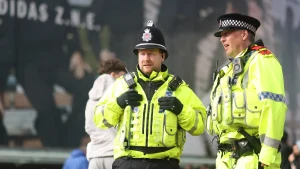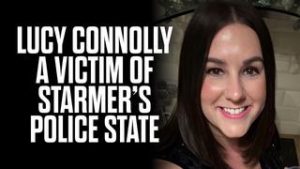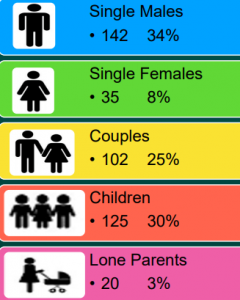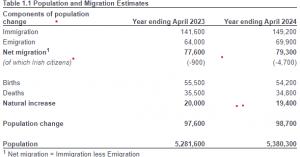I have already addressed the issue of free speech in the UK , and as an aside, made some comments on our US cousins views on the subject. ( Musk ) As I have said previously, there are benefits in writing a blog that no one reads and one of them is that I can revisit a subject as often as I wish. With that in mind, I notice that, what was a trickle of judgement from our cousins has recently become a torrent of self righteous commentary from the US on the issue of free speech in the UK. The initial catalyst for this essay was the assassination of Charlie Kirk and the fall of Jimmy Kimmel. Just to clarify for those sensible people who do not follow US politics, Jimmy Kimmel did not pull the trigger that killed Charlie Kirk. You wouldn’t know that from the reporting of the legacy press today who has, almost exclusively, focussed on Kimmel’s’ Late Night show being pulled because he made some characteristically ill informed and nasty comments about the assassination. So why have I started my essay with this story? I wanted to point out that although the UK has very serious individual freedom issues, those who criticise from across the Atlantic should look to their own failings before criticising others. You could instance JD Vance’s Munich speech where he singled out the UK for its anti freedom of speech actions or, the following advice from the State Department :
The US State Department has accused the UK of having “significant human rights issues”, including restrictions on free speech. The unflattering assessment comes via a new version of an annual Human Rights Practices report ……… On free speech, while “generally provided” for, the report cites “specific areas of concern” around limits on “political speech deemed ‘hateful’ or ‘offensive'”. Sky News, 13/08/25
To get back to Jimmy Kimmel. His program was pulled after, a not so veiled threat, from the Trump appointed chairman of the Federal Communications Commission, that Kimmel should be fired or suspended for his comments. I hold no brief for Kimmel and agree with Jim Geraghty’s view that, “As a host, when the topic comes to politics, Kimmel is snide, mean, and spiteful.” National Review 19/09/25. However, I would suggest that if a similar situation played out in the UK, so called protectors of free speech and the First Amendment, Trump, Vance et al, would be up in arms decrying government intervention by suppressing free speech. The Democrats have ‘pounced’ on this opportunity to repeat their refrain that Trump is a threat to democracy because of this but their record is even worse. The difference is that they can mobilise their power base in the legacy media, Universities, Unions, Entertainment and bureaucracies to do their dirty work for them. In the political arena we have the great Russia Hoax which took two years to establish that there were no grounds to the claim that Trump colluded with the Russians to affect the 2016 election. During Covid the medical establishment circled the wagons and actively suppressed any view which challenged the official orthodoxy, such as the Great Barrington Declaration co authored by Jay Bhattacharya. ( 97% of Scientists ) We also have the coordinated Lawfare assaults, the attempt to take Trump off the ballet, which had to be resolved at the Supreme Court and various non profits taking aim at individuals who have transgressed progressives group think in some way. For example, Mike Lindell — The CEO of My Pillow said his company was ditched by nearly 20 retailers after he publicly questioned the electoral results of the 2020 presidential election
Chris Harrison – The host of ABC’s “The Bachelor” franchise decided to “step aside” after defending current contestant Rachael Kirkconnell when old photos surfaced of her attending an Old South antebellum party. Adam Rubenstein — The former New York Times opinion editor and writer resigned from the paper in December, six months after its staff went into an uproar over a piece he edited by Sen. Tom Cotton. Matthew Yglesias — The liberal opinion writer resigned from Vox, a publication he co-founded, after many of his woke colleagues found his articles too right of centre 16/02/21, The Washington Times
So, from the above we can see that some Americans have a blind spot when it comes to Freedom of Speech issues in their own backyard, which seems to give them permission to highlight failings in others. Both sides of the political divide seem to exercise suppression of free speech but I would say that the Democrats seem to be better at it, perhaps because they have had more practice than their opponents. (More for another day) I would suggests that the First Amendment is increasingly under attack and is only held up by the Supreme Court, which is in danger of being dragged into partisan warfare. The other avenue for concern is the explosion of cancel culture which by passes all conventional safeguards and passes judgement in the court of public opinion, as some of the examples above illustrate.
Having said all of the above, when we come to the UK I am afraid much of the criticism I complain of, is justified. We can see the depth of the problem or, size of the swamp, whichever way you look at it, by the reaction to the Supreme Court’s definition of a woman as it applies the 2010 Equality Act . We can see embedded opposition slow walking observance to the law in the NHS and the SNP. We see the Liberal Party split on the issue and as a result not allowing the subject to be raised at their recent Party Conference. We can see Bristol City Council’s Green Party rejecting the Supreme Courts decision by wanting to force the introduction of non gendered speech such as, “chest feeding”, “people with ovaries” and instead of ‘maternity’ substituting it with ‘Paternity’. The last bit defies even Green Party logic! All of the above is for another day. I would like to focus on the specific area of the implementation of the Hate Speech Laws and the resulting erosion of individual rights in the UK. There are a large number of laws, excluding regulations, that are enacted to protect people from, amongst other things, hate speech. (A silent round of applause for anyone who can add to the list) Whilst the Equalities Act, amended by the Supreme Court, is mainly concerned with employment it is interesting to note the sheer volume of legislation which, in effect criminalises citizens speech and thought. The main Acts are as follows:
Public Order Act 1986, The Football Offences Act 1991, Criminal Justice and Public Order Act 1994, 1998’s Crime and Disorder Act, The Racial and Religious Hatred Act 2006,The Criminal Justice and Immigration Act 2008, the Online Safety Act 2024,
2010 Equality Act updated protected characteristics dissimilarly Gender, Race, Disability, Religion or belief, Sexual orientation, Gender reassignment, Marriage or civil partnerships, Pregnancy and maternity
The difficulty is that much of this legislation is promoted by a belief that it will satisfy the most vocal wing of a party with little thought of how it will be enacted and the almost inevitable unintended consequences that follows any government attempt at social engineering.

The picture on the left is a still from a video taken by Deborah Anderson, described as a Trump supported, of an interview by a Met Police officer concerning something she wrote on Facebook. She was told that if she didn’t agree to apologise she would have to attend a formal interview at the police station. Ms Anderson is a cancer sufferer and didn’t appreciate the police home visit and responded, “I’m not apologising to anybody.” Good for her. But can you see what the officer is saying here? He said, “Something that we believe you’ve written on Facebook has upset someone.” Not, we have received a complaint from X that we deem contravenes Sect X of the xxxx Act in relation to your Facebook post of YYYY. The, “we believe” bit looks as though they haven’t even done

any basic investigation into the complaint but assumed that they could get a quick confession and close the file. This was the case with the six police officers arresting parents over a private WhatsApp posting about a dispute with a School Head Teacher. ( Dixon ) The police wanted to handcuff the mother as they arrested her but relented when the mother pleaded with them not to do it in front of her children. ( See Update ) The common factors between the above stories are that in neither cases was the complainant identified, nor evidence of the hate speech given but in both cases the police presence was oppressive and charges were subsequently dropped.

As I have reported in other essays, the first casualty of criminalising speech and thought; is the police. Sending five armed officers to arrest Graham Linehan; six to arrest the law abiding parents described above, does nothing to enhance their reputation. This at a time when they complain that they are starved of resources and cannot respond to low level crime. As noted above, in most cases, the charges are dropped but a non-crime hate incident (NCHI) may be recorded. The police have received significant blowback for their involvement in attempting to enforce the myriad hate speech laws and have called for greater clarity from the government. Sir Mark Rowley, Head of the Met, is to meet the Home Secretary to try to get a better definition of what constitutes a hate crime. “Sir Mark Rowley wants to free police from investigating complaints with no evidence of intended real-world harm.” Telegraph 07/09/25 Some would say that he is a bit too late to the party but it was his police force that arrested Graham Linehan for posting the following advice to woman, on X, “If a trans-identified male is in a female-only space he is committing a violent, abusive act. Make a scene, call the cops and if all else fails, punch him in the balls.” Is this really promoting “real world harm” ? Mention of the non-crime hate incident (NCHI) is another reason that the police are becoming more unpopular. The Times editorial, on the subject was quite blunt and to the point;
It is a legal abomination, attacking freedom of speech through the use of blacklisting and requiring almost nothing in the way of proof. The Times 14/11/24

The editorial went on to describe the introduction of NCHI’s as an invasive weed which grows until it permeated the whole legal system. In summary it is defined as , “A non-crime hate incident (NCHI) is where someone perceives hostility or prejudice based on characteristics such as race, religion, sexual orientation, disability, or gender identity—but the incident does not meet the threshold of a criminal offence.” Legisia. What this means is that I can report my neighbour to the police after an argument over parking, framing it as a race issue, and if the police decide not to prosecute they can record it as a NCHI. We know that the police have some discretion in whether to investigate criminal cases, despite what Mark Rowley implies but it is obvious that this is not exercised on a common sense way. It does not explain why there are so many instances of petty claims that have been investigated and recorded as Hate Crimes. The other part of the example I gave was that it is my perception of an event which forms the basis of a police review. The Free Speech Union records the following extract from the College of Policing’s (CoP’s) 2014 Hate Crime Operation Guidance (HCOG)
“The victim does not have to justify or provide evidence of their belief, and police officers or staff should not directly challenge this perception. Evidence of the hostility is not required.” College of Policing 2014
Getting back to my complaint against my neighbour, he doesn’t know who the complainant is; the complaint is based on my perception of the facts; there is no trial where this can be challenged and he might not even be aware that he has a police record. What is the difference between the NCHI records and the normal criminal intelligence gathering by police? The difference, for example, is that my neighbour may be refused employment as a result of an enhanced record search by his potential employer. What we have seen is the inevitable outcome of an erosion of citizens rights, when governments give way to ideologically driven extremists within their party. Lord Hogan-Howe, formerly head of the Met, is leading a campaign in the House of Lords to abolish NCHIs. He made two key points in the Lords,
“Whether something is a crime is an objective statutory test. Whether something is a non-crime hate incident is a subjective test based on guidance — producing inconsistent outcomes.”
“the police should not be put in the invidious position of having to record what are often vexatious, politically motivated complaints, which inevitably undermines public confidence in them.” The Times 16/10/25
What of poor Jimmy Kimmel, was he consigned to the backwater of the Bakers Field news? Did he have to scrape by on less than his $16 million annual salary? Surprise, surprise, his show was reinstated after three days but all is not well in the late night format. According to the New York Post his show has been bleeding viewers for some time, ” Nielsen data showed sharp summer declines and a year-long slide.” 18/09/25, New York Post. However, as much as he betrayed his ‘snide, mean, and spiteful’ nature in describing Charlie Kirks assassination, did it rise the the level of hate speech. In the recent overturning of a case against a protestor who burnt a copy of the Koran, the UK Appeal Court Judge, Mr Justice Bennathan said on the right to free speech,
One of the precious rights that affords us is to express our own views and read, hear and consider ideas without the state intervening to stop us doing so.” ‘The price we pay for that is having to allow others to exercise the same rights, even if that upsets, offends or shocks us.’ The Daily Mail 10/10/25

If we apply this ruling to Kimmel, we can say that although he lied about the circumstances of the shooting and attempted to defame the victim, in my view his comments do not rise to the level of a crime. (May his show collapse under its own weight of partisan hackery! Me exercising my own free speech right) There seem to be two themes that come out of the discussion so far that may make speech a criminal matter or not. The first is mentioned by Mr Justice Bennathan in the Koran case, ‘Coskun’s actions were not directed at a person or people in particular.’ By this measure death threats made against JK Rowling would pass the test. The second is that the police should be taken out of the business of trying to assess criminality based on perception and subjectivity where they are not able to apply an “objective statutory test.” Perhaps a third theme is that all matters deemed to be criminal should be conducted to the same standards as any other prosecution for common law infringement. Therefore, the police should have to prove that the accused speech was a real threat to the complainant and that the accused should have the right to defend themselves in open court, with all the force of the law that protects the innocent until proven guilty. Let us run a couple of cases by the above principles and see where it leaves us. We can eliminate the Hertfordshire Parents on WhatsApp making fun of the Head Teacher of the School as being inconsequential. It is trivial, non threatening and the police should have immediately rejected it as not rising to the level of criminality. Include the Graham Linehan case under the same heading as being trivial and politically motivated. In the case of Lucy Connolly, it is interesting to look at her treatment for a post which she regretted and took down within three hours and the sentence imposed . She was sentenced to 31 months jail after reacting to the the horrific murders of three girls by Axel Rudakubana. She had no criminal record, pleaded guilty, received no bail, was refused early release and had an appeal against the sentence turned down. We will now see why she has become an symbol of a two tier justice system. Contrast her treatment with that of Salman Iftikhar, who threatened an air steward and her colleagues saying, “You will be dragged by your hair from your room and gang raped and set on fire.” He threatened to blow up the cabin crew’s floor in their hotel.” (The Telegraph 12/08/25) He was sentenced to 15 months jail, even though he had a criminal record and the threats that he made were an horrific example of Mr Justice Bennathans test of whether they were general or, personal. Lord Hermer, the Attorney General, is fighting a losing battle to convince the public that giving Lucy Connolly twice the sentence of Iftikhar is not an example of two tier justice.(See update)
I have described some of the background and outcomes related to those, “legal abominations” known as the Hate Speech laws. However, I have only scratched the surface and there are so many other problems associated with these very un British laws. I could do a whole essay on the crime statistics covering laws that both current and past Police Chiefs have described as subjective and ill defined. I could also highlight the ‘chilling effect’ on free speech of heavy handed policing which was the subject of an ECHR case in which the Court said, “that the very fact of imposing a criminal conviction was one of the most serious forms of interference with the right to freedom of expression, having regard to the existence of other means of intervention and rebuttal, particularly through civil remedies. ” ECHR Reichman v. France. Translated, this means that six policemen arriving at your door and taking you to the police station, in handcuffs, has the desired effect of sending a message. No matter that the investigation is often dropped, it is a clear warning to all that there is a consequence to voicing your opinion, whether it be in the village pub or, on campus in America. It is my opinion that Lucy Connolly’s sentence was such a warning, clearly intended to chill any discussion concerning crimes committed by illegal immigrants. The logic of the above discussion appears to be that we should keep officialdom out of controlling public thought and speech, as suggested by the ECHR, unless there are provable threats to public safety. That anyone accused of such behaviour should have the same basic rights as any other defendant; the process should be fully transparent and the law tightly defined to prevent any official overreach, as in the Connolly case. Failing that, as suggested by the ECHR, there is the option of suing your offender under civil law and obtaining a remedy whilst preserving the rights of both parties of ” intervention and rebuttal.” “In the year ending March 2024, there were 140,561 hate crimes recorded by the police in England and Wales” UK Gov 10/10/24 Given all that we have discussed, I do not believe these numbers. I do not believe they reflect actual criminality. I do not believe that the numbers are statistically robust enough to rely on. I do believe that freedom of speech is one of the foundations of Britishness, which has been eroded by weak governments.
There is no country in the world in which everything can be provided for by the laws, or in which political institutions can prove a substitute for common sense and public morality. — Alexis de Tocqueville
Update
After considerable backlash from the public over the Lucy Connolly sentence of 31 months in prison, the case of Salman Iftikhar was referred to the Court of Appeal to review his sentence. His sentence was increased from 15 months to four years and three months. The main target of his abuse said that she was “haunted and traumatised” and had to take14 months off work as a result. There was no explanation why the initial sentence was set so low.
Sources
N/K, 13/08/25, Sky News, US accuses UK of ‘significant human rights issues’ and restricting free speech, https://news.sky.com/story/us-accuses-uk-of-significant-human-rights-issues-and-restricting-free-speech-13410873
Ariel Zilber, 18/09/25, New York Post, Jimmy Kimmel’s ratings were plummeting before ABC suspended him for Charlie Kirk comments, https://www.msn.com/en-us/tv/news/jimmy-kimmel-s-ratings-were-plummeting-before-abc-suspended-him-for-charlie-kirk-comments/ar-AA1MPOBv
Kelly Sadler, 16/02/21, The Washington Times, https://www.washingtontimes.com/news/2021/feb/16/top-10-recent-examples-cancel-culture/
John Flatley, 10 October 2024, Hate crime, England and Wales, year ending March 2024, https://www.gov.uk/government/statistics/hate-crime-england-and-wales-year-ending-march-2024/hate-crime-england-and-wales-year-ending-march-2024
Free Speech Union, https://freespeechunion.org/news/?v=7885444af42e
https://www.bbc.co.uk/news/articles/c1mx09l5297o
Leading article, 14/11/24, The Times, The Times view on non-crime hate incidents: Wasting Police Time, https://www.thetimes.com/comment/the-times-view/article/the-times-view-on-non-crime-hate-incidents-wasting-police-time-z520r7txk
Matt Dathan, 16/10/25, The Times, Ex-Met Police chief leads call to abolish non-crime hate incidents, https://www.thetimes.com/article/523326f1-56d3-450b-b84e-9348cd20c706
OLIVIA CHRISTIE, 10/10/25, Daily Mail, Koran-burning protester wins appeal against conviction for a religiously aggravated public order offence after arguing his actions are protected under free speech, https://www.dailymail.co.uk/news/article-15180897/Protester-Koran-conviction-appeal-win.html
Genevieve Holl-Allen, 12/08/25, The Telegraph ,Rape threat passenger ‘should not have shorter sentence than Lucy Connolly’, https://www.telegraph.co.uk/politics/2025/08/12/rape-threat-passenger-shorter-sentence-lucy-connolly/




 how to administer medication in an emergency. A key element in this saga is that the Levines still don’t know what the offending communication was that triggered the arrest. The Times asked the school, the local council and police for information about the quantity of emails and for examples of what constituted malicious communications. All three declined to give details.(The Times, 29/03/25)
how to administer medication in an emergency. A key element in this saga is that the Levines still don’t know what the offending communication was that triggered the arrest. The Times asked the school, the local council and police for information about the quantity of emails and for examples of what constituted malicious communications. All three declined to give details.(The Times, 29/03/25)


 Whichever, figure you take it is an enormous strain on public services and local communities. For any journalist to produce any article on the impact of immigration, without putting the numbers in context is at best incompetent.
Whichever, figure you take it is an enormous strain on public services and local communities. For any journalist to produce any article on the impact of immigration, without putting the numbers in context is at best incompetent.










